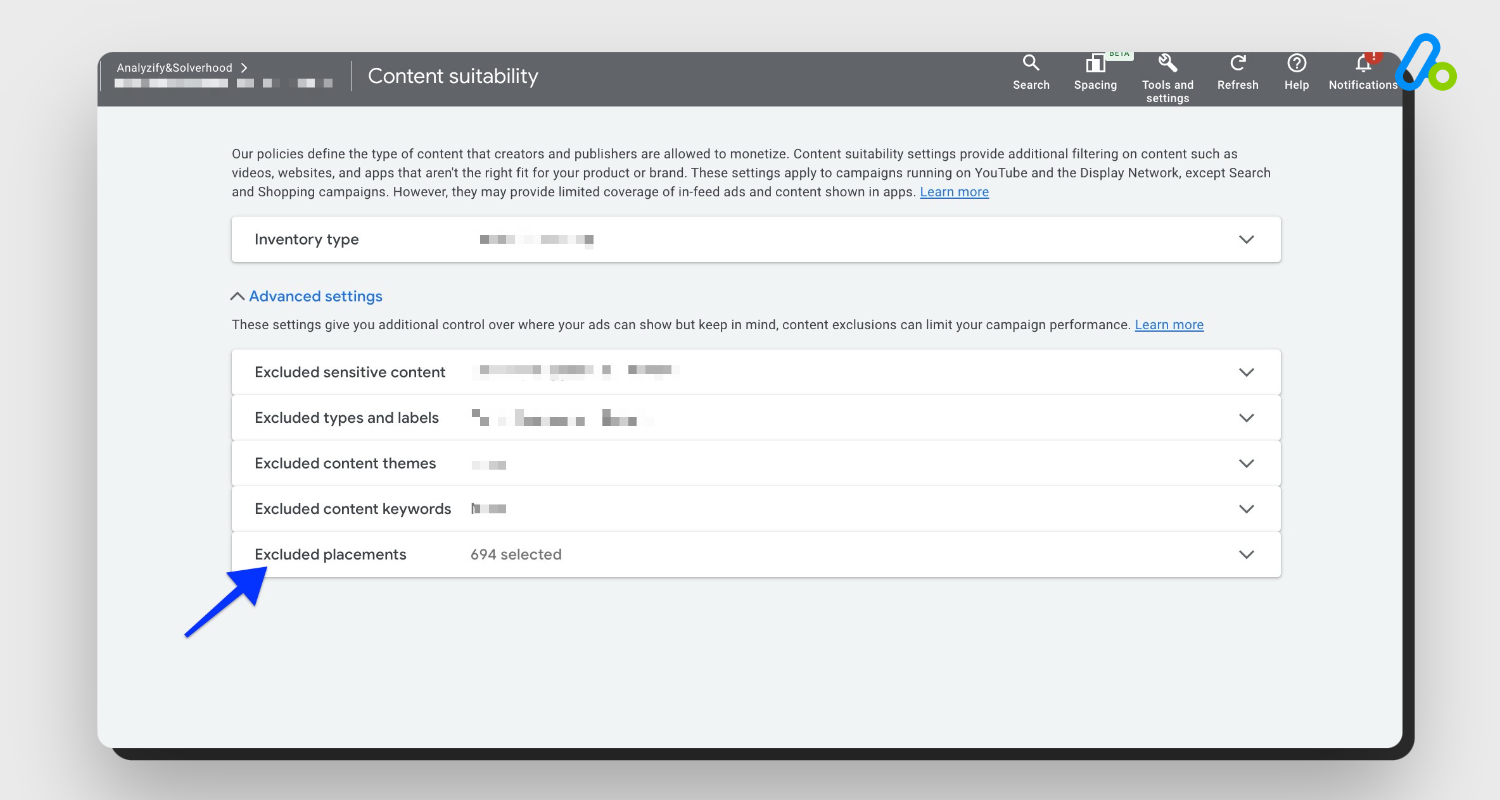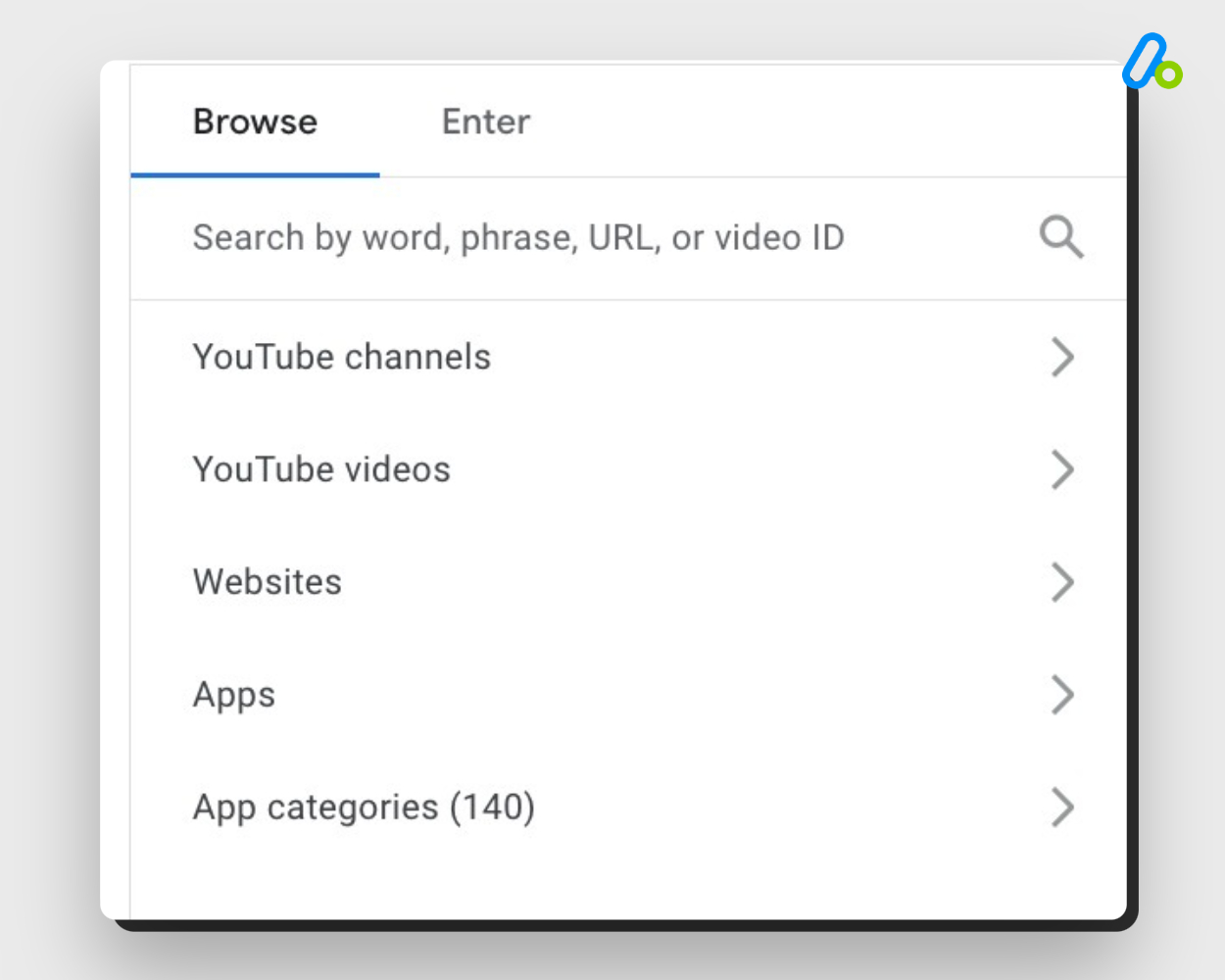Running Performance Max campaigns requires precision and efficiency, particularly when it comes to managing where your ads are displayed by Google.
Unwanted placements – be they on irrelevant websites or within apps that don’t align with your brand – can significantly impact the effectiveness of your campaigns.

They not only waste your valuable advertising budget but can also harm your brand reputation and hinder your campaign’s ability to reach the target audience.
While you are not allowed to exclude unwanted placements from Performance Max campaigns individually, you can do that on an account level easily.
Here, you will explore:
- How to exclude unwanted placements from Performance Max campaigns,
- How unwanted placement exclusions actually work,
- The advantages of excluding unwanted placements,
along with many other valuable insights that can help you get the most out of your Performance Max campaigns for better outcomes & key performance indicators.
Exclude Unwanted Placements from Performance Max Campaigns
To exclude unwanted placements from Performance Max campaigns, you first need to identify the irrelevant placements.
Identify Unwanted or Irrelevant Placements for Pmax Campaigns
Google has a ready-made report to let you see the placements where your PMax campaign ads are displayed.
With this report, you can easily analyze the placements where your PMax ads receive the most impressions on the display network.
Although Google Ads does not yet include important budgetary metrics such as clicks or cost for these placements, impressions also provide important insights for analyzing inappropriate/irrelevant placements.
Exclude Unwanted/Irrelevant Placements at the Account Level
Unfortunately, Google has not yet introduced the option to exclude individual placements in Performance Max campaigns.
So, you need to make those exclusions at the account level.
Leveraging account-level placement exclusion settings gives you comprehensive control over where ads appear for PMax optimization.
REMEMBER: Settings or exclusions at the account level affect all of your campaigns. Therefore, we recommend that you evaluate every aspect while performing these exclusions.
Unwanted Placement Exclusions Explained
Performance Max campaigns offer a robust platform for achieving broad visibility across the Google Network.
However, the challenge of unwanted placements—where ads may appear in contexts not aligned with a brand’s goals or audience—necessitates a strategic approach to exclusions.
Unwanted placement exclusions are a mechanism within Google Ads that allows you to prevent your ads from being displayed in specific, non-ideal environments.
This could mean excluding certain websites, apps, or even video content that doesn’t resonate with your target audience or campaign objectives.
The importance of these exclusions lies in their ability to refine targeting, enhance ad spend efficiency, and protect brand integrity.
BONUS CONTENT: To improve the performance of your PMax campaigns quality, you are recommended to take a look at our detailed guide to Negative Keywords in Performance Max Campaigns.
How Unwanted Placement Exclusions Work
As mentioned in our first step, the process starts with identifying specific URLs, apps, or content categories that are underperforming or misaligned with campaign goals.
Then, you can manually set up exclusions at the account level. This ensures that future ad placements do not include these excluded entities.
Types of Exclusions
You can choose from various exclusion types, such as specific website URLs, entire app categories, or certain types of video content on platforms like YouTube.

Each type addresses different aspects of placement targeting, offering flexibility in how exclusions are applied.
Why You Should Exclude Unwanted Placements from Performance Max Campaigns
Let’s say you own a Shopify store that sells luxury watches.
You decide to run Performance Max campaigns in an effort to increase your sales. Then, you configure your Pmax campaigns and then publish your ads.
After some time, you see that your ads are displayed on gaming apps/websites, or some YouTube channels that produce videos for kids - which are basically far from your target audience.
If you exclude unwanted placements from Performance Max campaigns, you can leverage:
Reduced Wasted Impressions
Unwanted placements often result in impressions that are not valuable to your campaign goals. Eliminating these can reduce wasted impressions, making your campaign metrics more indicative of true performance and interest.
Optimized Ad Spend
By excluding placements that do not align with your target audience or brand values, you can make sure that your advertising budget is spent more efficiently on sites, apps, and videos that are likely to generate higher engagement and conversions.
Improved Campaign Performance
Google aims to ensure your ads appear on relevant websites, yet there are instances where mismatches occur. Removing non-performing or irrelevant placements helps to focus your campaign on more relevant traffic sources, which can improve your conversions & key metrics such CTR and ROAS.
Enhance Brand Image
Once you exclude unwanted placements from Performance Max campaigns, you ensure that your ads do not appear on sites or apps that could potentially harm your brand reputation. This is crucial for maintaining the integrity and trustworthiness of your brand in the digital landscape.
Target Audience Precision
By cutting out irrelevant placements, you refine your targeting, ensuring that your ads reach the most relevant and interested audiences. This precision targeting can lead to better engagement and customer acquisition.
Control Over Ad Environment
Excluding specific placements gives you greater control over the environment in which your ads are displayed, allowing for a more strategic and tailored advertising approach that aligns with campaign objectives and audience preferences.
Increased ROI
By focusing your advertising efforts on placements that are more likely to convert, you can achieve a higher return on investment. This is because your budget is being allocated to more effective channels, leading to better outcomes for each dollar spent.
Data-Driven Decisions
The process of excluding unwanted placements from Performance Max campaigns allows you to analyze which placements are not performing well and understand why. This data-driven approach to optimization can inform future campaign strategies and targeting decisions.
Improved User Experience
Targeting relevant placements ensures that your ads are more likely to be seen as valuable and engaging by your audience, rather than intrusive or irrelevant. This improves the overall user experience, which can positively impact brand perception and customer loyalty.
Competitive Advantage
By efficiently managing your placements, you can gain a competitive edge. Your ads will be more likely to engage the right audiences at the right time, setting your campaigns apart from competitors who may not be as diligent in their placement strategies.
Final Words
Adopting a proactive approach when you exclude unwanted placements from Performance Max campaigns requires regular monitoring and analysis of campaign data to make informed decisions.
It’s a dynamic process that can help you stay aligned with your advertising & marketing goals and adapt to the ever-changing digital advertising landscape.
Ultimately, by focusing on quality over quantity and prioritizing placements that align with your brand values and audience interests, you can achieve more meaningful engagement and drive better business outcomes.

































